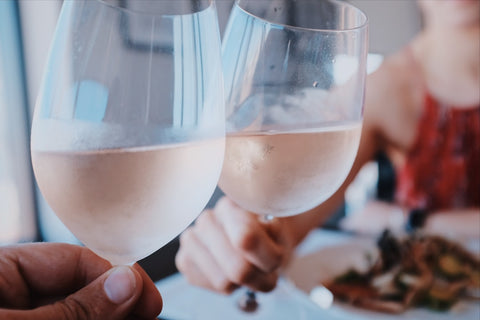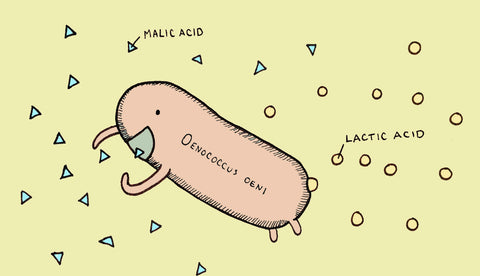Wine Fermentation Techniques: A Complete Guide

Fermentation is where the magic happens in winemaking. It’s the moment grape juice transforms into wine, thanks to the incredible work of yeast and bacteria. But did you know there’s more than one way to ferment wine? Different fermentation techniques can influence a wine’s flavour, aroma, and texture, resulting in the wide variety of wines we enjoy today.
In this guide, we’ll explore the most common wine fermentation techniques, how they shape wine styles, and what you can expect in the glass.
What is Wine Fermentation?
At its core, fermentation is the process where yeast consumes grape sugars and converts them into alcohol and carbon dioxide. This chemical reaction also produces hundreds of compounds that contribute to a wine's aroma and flavour.
The two primary types of fermentation in winemaking are:
- Alcoholic Fermentation: The primary process driven by yeast converting sugar into alcohol.
- Malolactic Fermentation (MLF): A secondary bacterial fermentation that softens acidity and creates creamy, buttery notes.
Learn more about MLF in our article: What is Malolactic Fermentation?
Key Wine Fermentation Techniques
1. Stainless Steel Fermentation
Best for: Crisp, fruit-forward wines like Sauvignon Blanc and Riesling.
Stainless steel tanks are widely used in winemaking because they are:
- Non-reactive: They don’t add any flavours to the wine.
- Temperature-Controlled: Winemakers can precisely control fermentation temperature.
- Preserve Freshness: Perfect for wines where fruit purity is key.
Wine Example: Sauvignon Blanc, Pinot Grigio
Explore how acidity shines in wines fermented in stainless steel in our guide: Understanding Wine Acidity.
2. Oak Barrel Fermentation
Best for: Rich, textured wines like Chardonnay or bold reds like Cabernet Sauvignon.
Fermenting in oak barrels can:
- Add flavours like vanilla, spice, and toast.
- Allow for gentle oxygen exposure, softening tannins and creating smoother textures.
- Enhance complexity and mouthfeel.
Wine Example: Oaked Chardonnay, Cabernet Sauvignon
Learn more about oak’s impact on wine in our guide: The Role of Oak in Winemaking.
3. Carbonic Maceration
Best for: Light, fruity red wines like Gamay (Beaujolais).
In this technique, whole grape clusters are placed in a sealed tank filled with carbon dioxide. The grapes begin fermenting from the inside out before crushing.
This results in:
- Bright fruit flavours (e.g., cherry, raspberry).
- Low tannins and a smooth texture.
- Wines meant to be drunk young.
Wine Example: Beaujolais Nouveau
Curious about red wine production? Check out our guide: How Red Wine is Made.
4. Wild (Native) Fermentation
Best for: Wines with complex, unique flavours often labelled as natural wines.
Instead of adding commercial yeast, winemakers rely on naturally occurring yeast on grape skins and in the winery environment to start fermentation.
- Pros: Unique flavours, true expression of terroir.
- Cons: Unpredictable results, higher risk of spoilage.
Wine Example: Many biodynamic and organic wines.
Explore more about natural wine styles in our guide: Natural Wines: What You Need to Know.
5. Co-Fermentation
Best for: Complex red wines with enhanced aromatic qualities.
Co-fermentation involves fermenting two or more grape varieties together in the same vessel rather than blending them later.
- Creates a harmonious integration of flavours.
- Often enhances aromatics and mouthfeel.
- Common in Syrah-Viognier blends (e.g., Côte-Rôtie from France).
Wine Example: Syrah-Viognier blend
6. Extended Maceration
Best for: Bold, tannic red wines like Cabernet Sauvignon and Nebbiolo.
In extended maceration, grape skins remain in contact with the juice long after fermentation ends.
This technique results in:
- Deeper colour and more tannins.
- Increased complexity and aging potential.
- A bold, structured wine style.
Wine Example: Barolo (Nebbiolo)
Want to know more about tannins in wine? Read our guide: Understanding Wine Tannins.
7. Whole Cluster Fermentation
Best for: Pinot Noir and Syrah wines.
Whole grape clusters (including stems) are fermented without destemming.
- Adds earthy, herbal notes.
- Increases tannin structure.
- Results in wines with textural depth.
Wine Example: High-end Pinot Noir
Fermentation Temperatures and Their Impact on Wine

- Cool Fermentation (10–15°C / 50–59°F): Preserves fruitiness, common in white wines.
- Warm Fermentation (25–30°C / 77–86°F): Extracts deeper flavours and tannins, typical in red wines.
Temperature control is critical to prevent stuck fermentations or off-flavours.
The Role of Yeast in Fermentation
Yeast is the unsung hero of winemaking. The two main types are:
- Commercial Yeast: Consistent results, predictable flavours.
- Wild Yeast: Unique, complex flavours but less control.
Discover more about yeast's role in our article: The Science of Wine Yeast.
Choosing the Right Fermentation Technique
The fermentation technique chosen depends on several factors:
- Grape Variety: Some grapes benefit from stainless steel, others from oak.
- Wine Style: Fresh and crisp vs. rich and textured.
- Winemaker's Vision: The final desired flavour and structure.
Each method contributes something unique to the wine's final character.
Conclusion: The Art and Science of Wine Fermentation
Fermentation isn’t just a technical process—it’s an art form. From the precision of stainless steel to the rustic charm of wild fermentation, every technique tells a story in the wine’s final sip.
At McLaren Vale Cellars, we celebrate wines crafted with care, passion, and thoughtful fermentation choices.
Explore our premium wine collection here.
Further Reading:
Here’s to the beautiful science and art of fermentation—cheers! 🍷✨




Comments (0)
There are no comments for this article. Be the first one to leave a message!